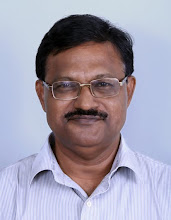Saturday, July 22, 2006
O J's Corner : Reflections
Not ripe for competitive
pricing for essential drugs
Three cheers for Minister of Fertilisers and Chemicals Ramvilas Paswan for standing firm on the proposal to cut prices of 354 essential medicines by 10 per cent to 70 per cent.
The new drug policy, being approved by the Cabinet at the earliest, has been vehemently opposed by pharmaceutical industries. They fear that their profit margin would come down to a detrimental level. Pharma pricing has always been following a progressive trend, but the present move would challenge their very existence, according to them.
The other side of the coin has also to be kept in mind. Recently, the Supreme Court asked the government to control prices of essential medicines. Even when the prices are lowered, the Government is allowing 150 per cent maximum allowable post-manufacturing expenditure.
The new policy would not result in sweeping changes, for only 33 per cent of the medicines come under price control. In terms of value, the 354 items whose prices are being lowered constitute only eight per cent of total drug production. Open market forces and competitive pricing have a free run for 67 per cent of the drugs.
Much can be said on both sides. Theoretically, the liberal would argue that once the market is opened up for global players, there cannot be protectionism. On the other side, every human society has concern for the poorest of the poor. Even capitalist perfectionists dole out freebies to the have-nots. The beauty of democracy running the show of governance lies in taking care of the deprived. Here we are not talking about whole-sale subsidy, but measures for taking care of the poor with essential drugs.
India’s peculiarity has to be noted by the world community. It harbours world’s largest number of poor people in a single country. Of the one billion inhabitants, 350 to 400 million are estimated to be living below the poverty line, of whom 75 per cent are from the rural areas.
Growth of middle class in India indicates that economic prosperity has been impressive, but distribution of wealth has been uneven. Illiteracy has been the main cause for generation of poverty.
Also population growth rate far exceeded economic growth rate for the last 50 years.
Moreover, protectionist policies have prevailed in the country since 1947 to 1991, which prevented large amount of foreign investment.
World Bank has reported that the poverty rate in India has come down on account of the growth rate pegged at 6.1 per cent.
It is all good that the middle class is emerging strongly and the economy is showing signs of making a climb.
But for a country like India with multitudes of the poor struggling to make a living, the sure-shot solution is not blanket infusion of market forces at one go.
The plight of the farmers has been caused by continued disregard of their interests for the last 50 years. No particular incentive was given to them for a long period of time. In fact, fabulous plan funds should have been released to the farm sector to increase production and productivity through high-yielding varieties and new technologies.
Essential medicines should be available to the poor at affordable prices. They cannot be left to fend for themselves among profiteering vultures. In developed countries, they have fool-proof mediclaim in-built in their system. We don’t have effective mediclaim for the poor. Until then, they have to survive.
Subscribe to:
Post Comments (Atom)


.jpg)



No comments:
Post a Comment